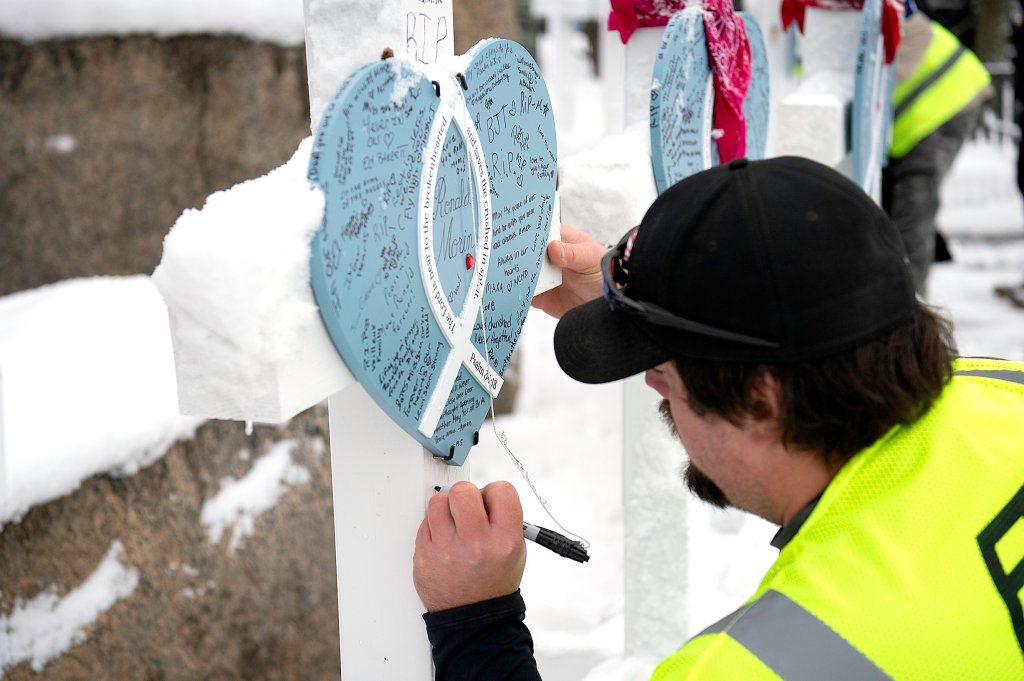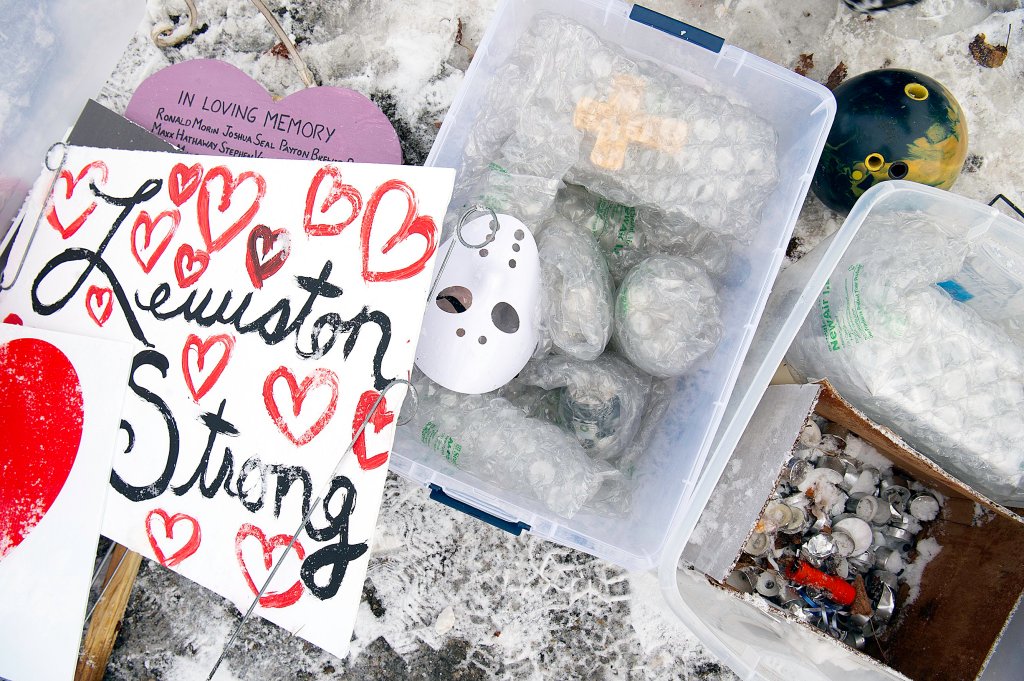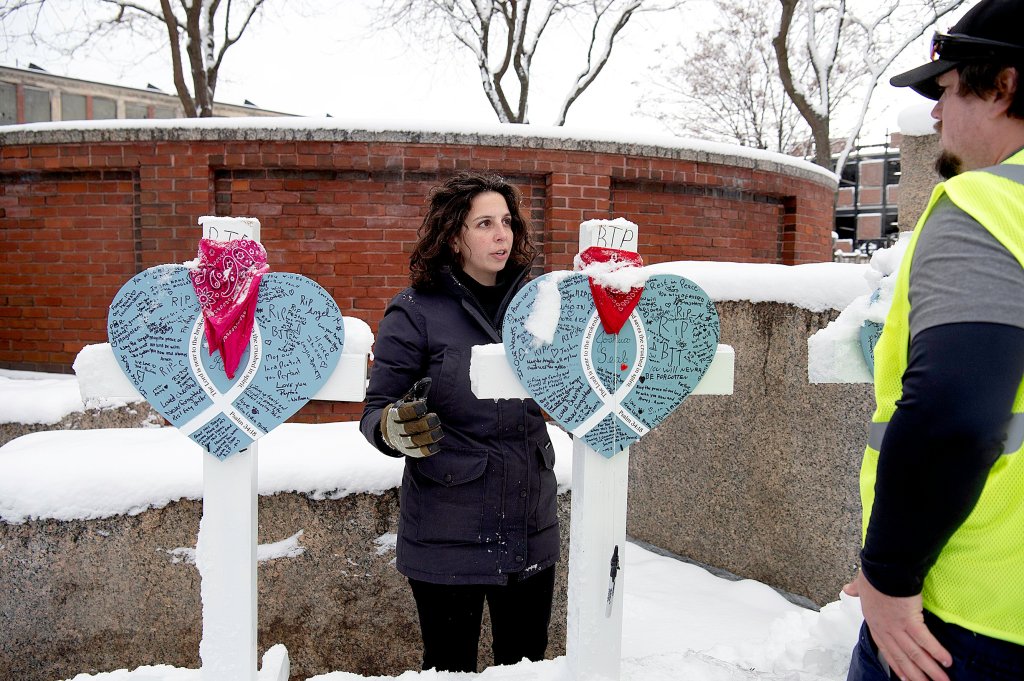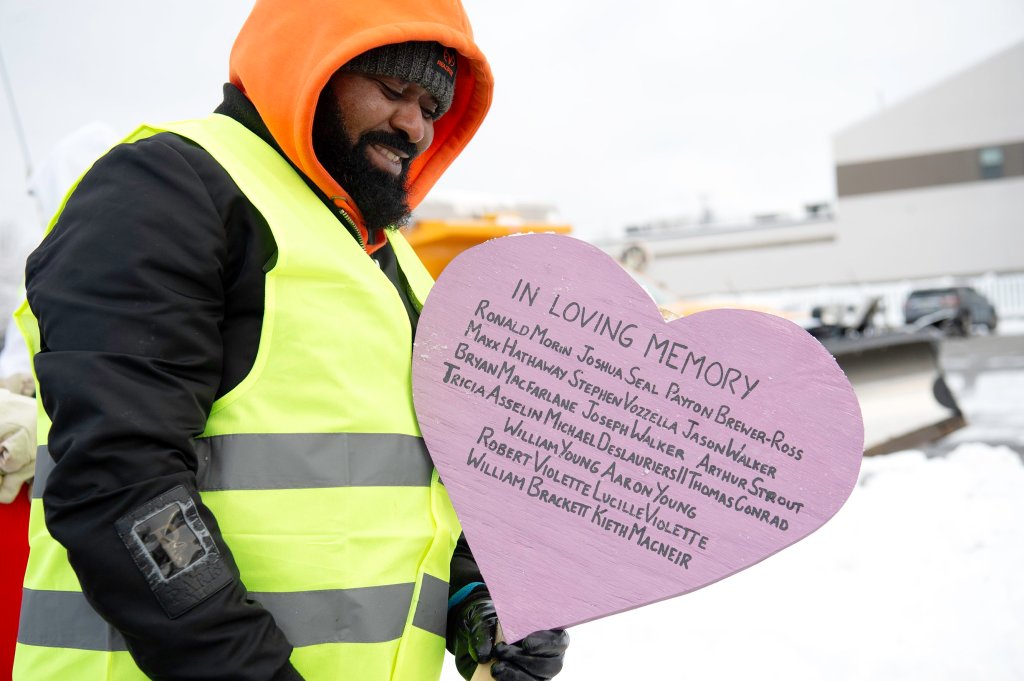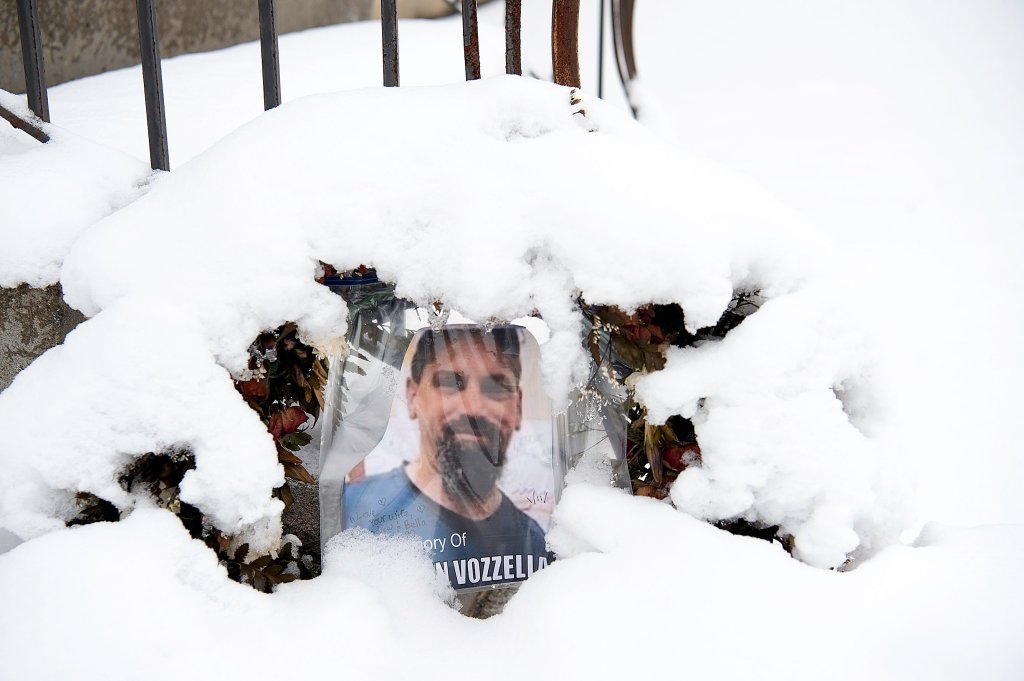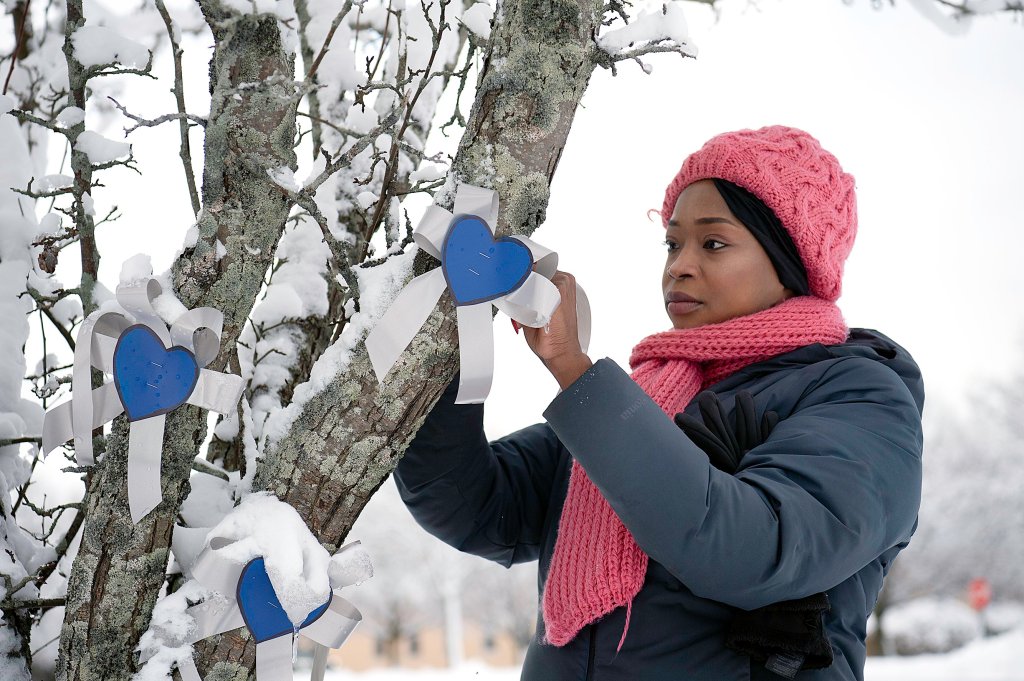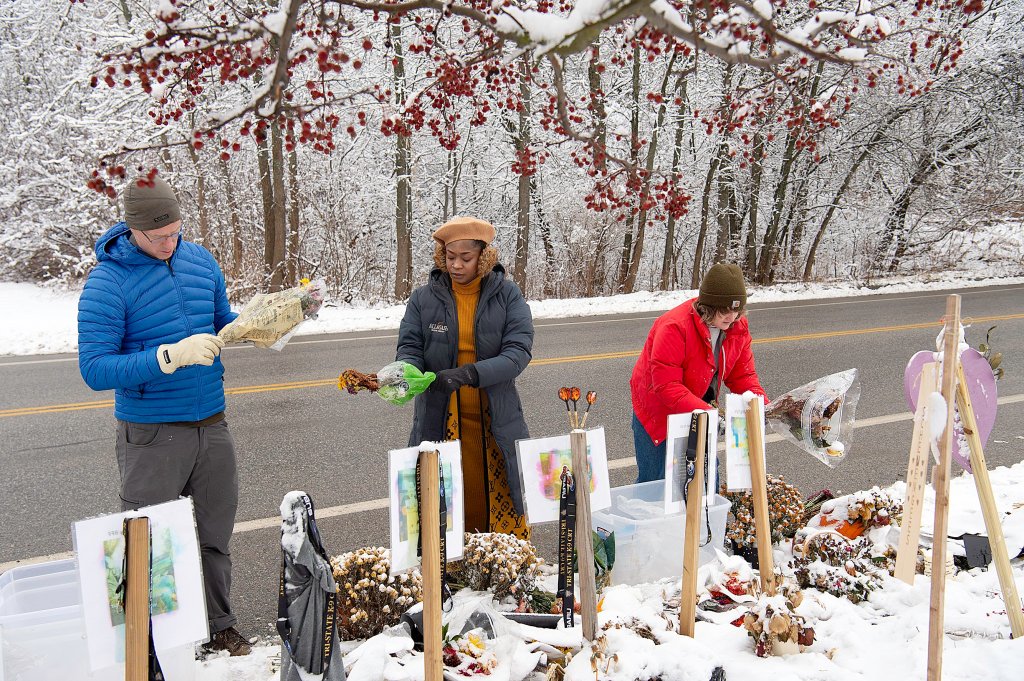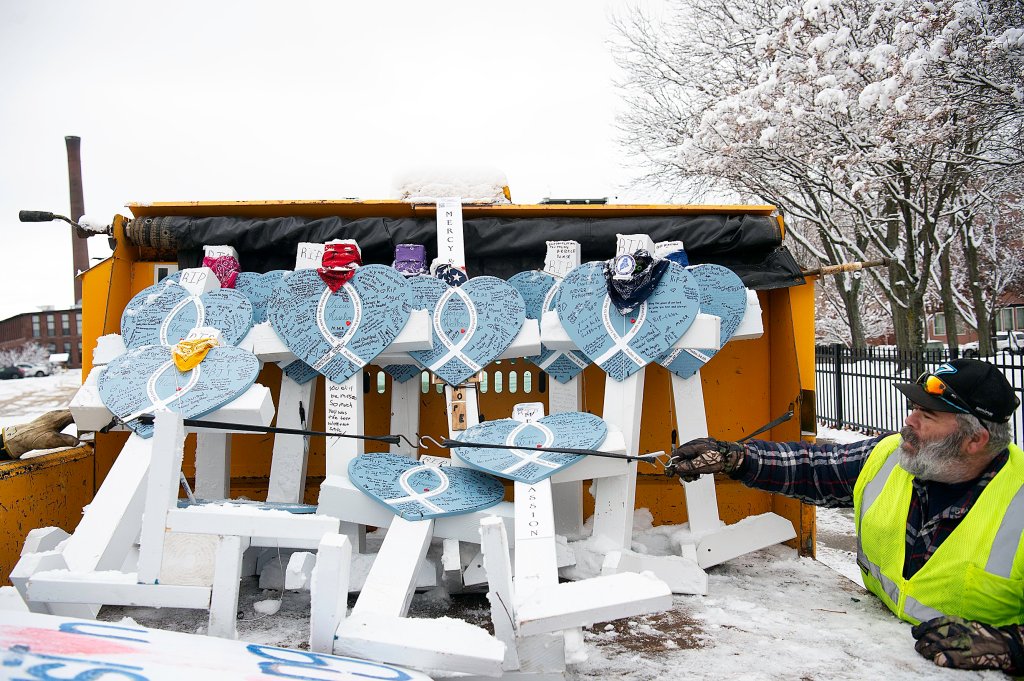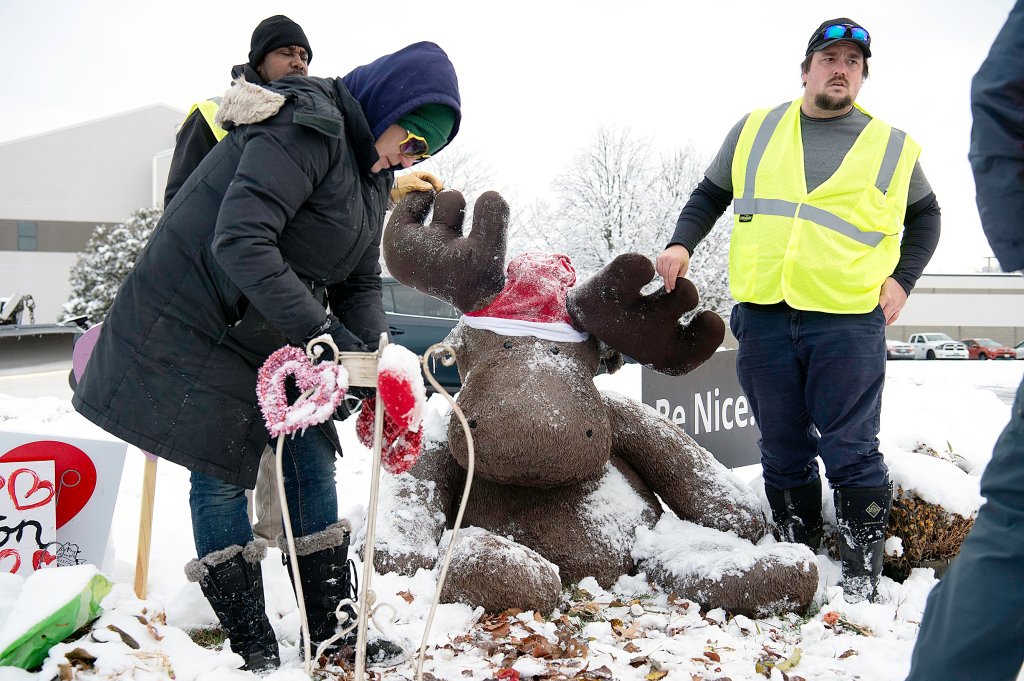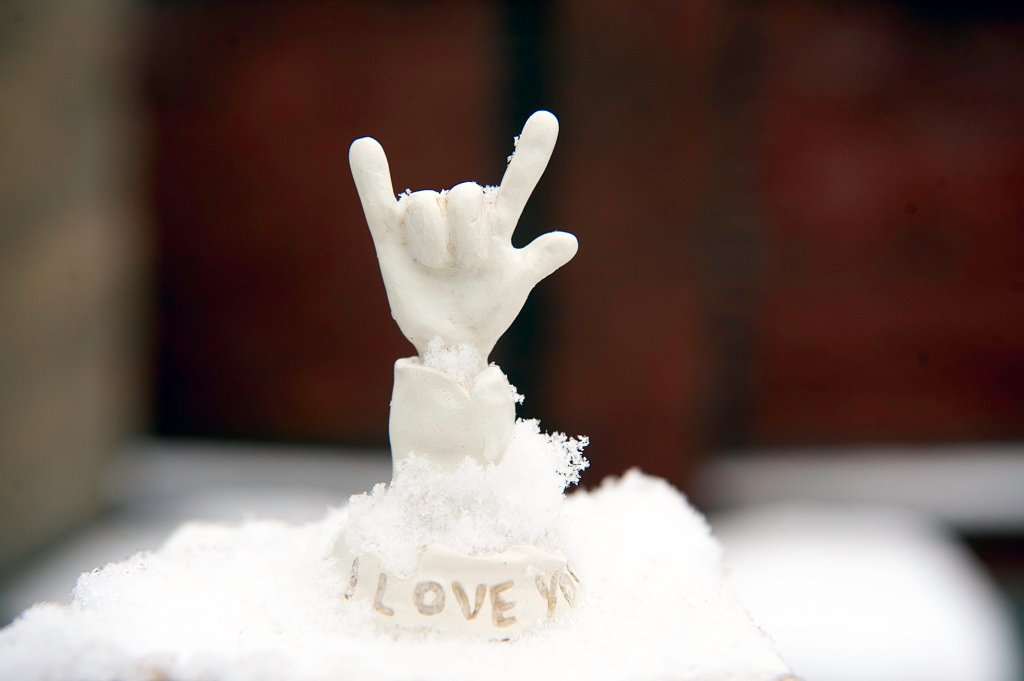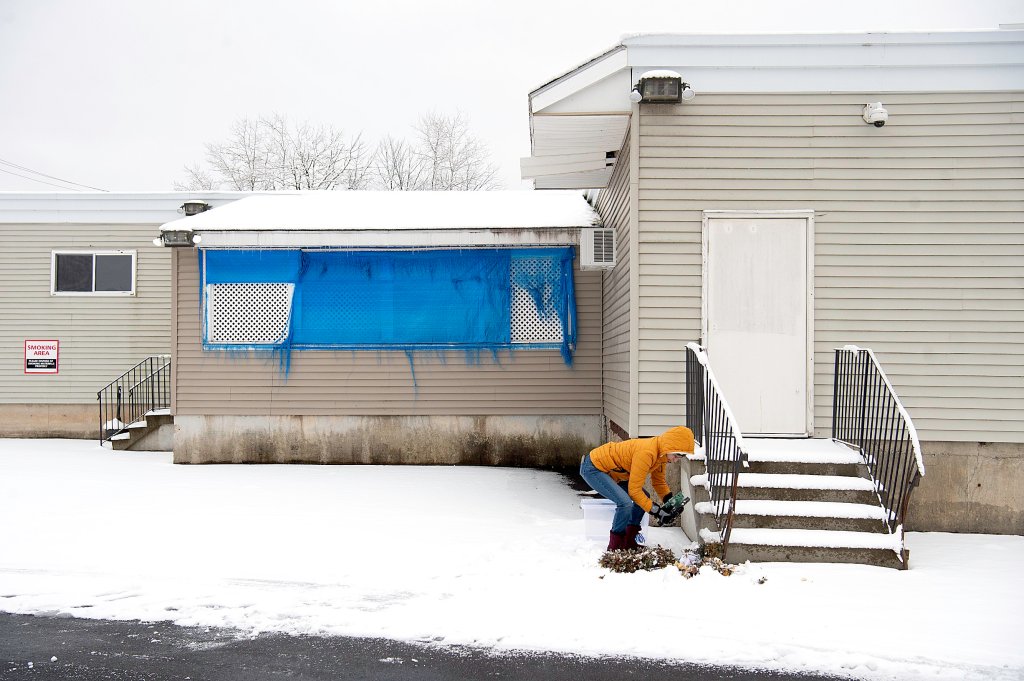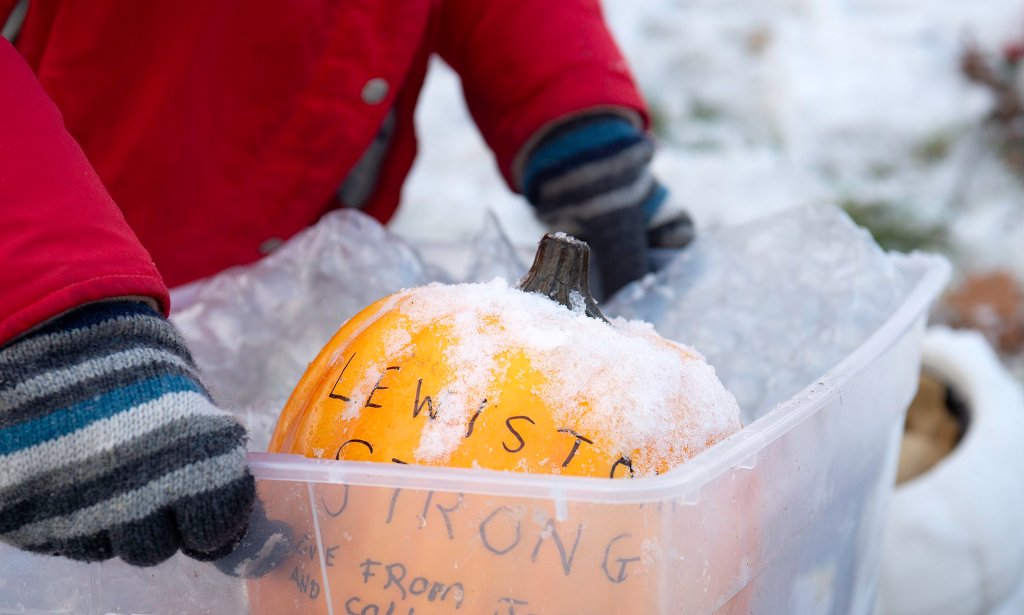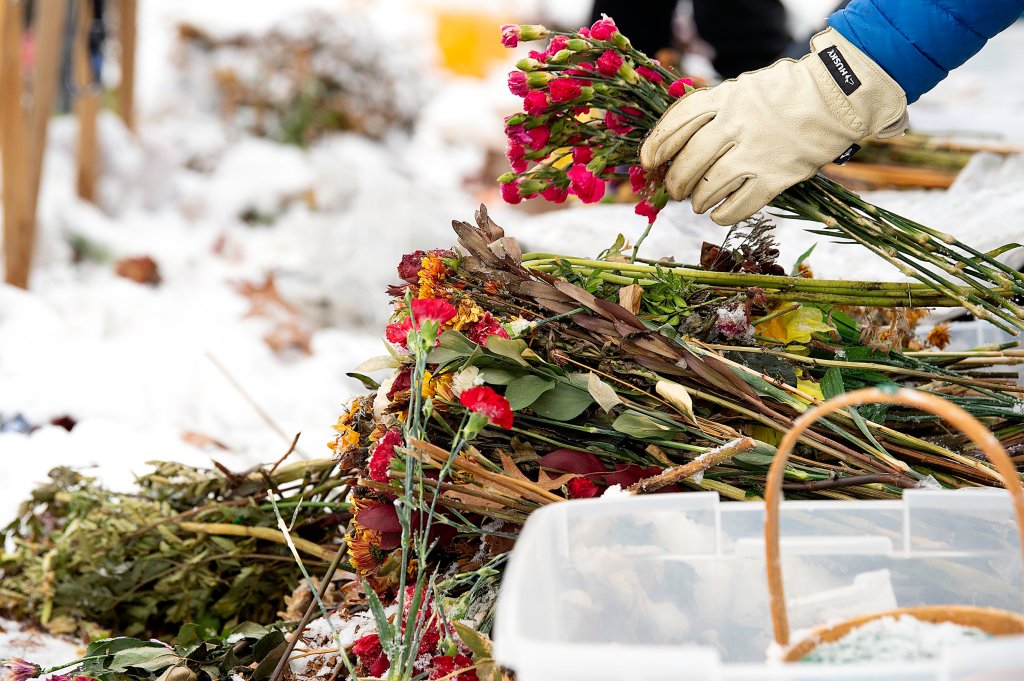LEWISTON — Early Tuesday, a crew from Lewiston’s public works department, including Jake Dostie, a highway equipment operator, helped clear away the fading remnants of the makeshift memorials erected around town to honor the victims of the Oct. 25 mass shooting.
At Raymond Gateway Park near the Lewiston end of the Longley Bridge, Dostie lifted a wooden cross with a blue heart on it that carried the name of Ronald Morin, a “friendly, outgoing” man he knew as a favorite umpire in softball.

Ekhlas Ahmed removes memorial items Tuesday from a tree near Just-In-Time Recreation in Lewiston. Items were taken to the Maine Museum of Innovation, Learning and Labor to be preserved for future remembrance of the Oct. 25 mass shooting that rocked the city.
Dostie had the job of carrying the display from the park to a truck that would transport it, along with a huge pile of other stuff, to the Maine Museum of Innovation, Learning and Labor, or Maine MILL for short.
After writing a message just below the heart on Morin’s cross, Dostie said that Morin and others he knew were never going to be at the softball field or the golf club or anywhere ever again.
“It’s very heart wrenching,” he said. “Something hitting this close to home is really difficult to deal with.”
“It seems like this took out some of the best,” Dostie said as he reflected on the 18 lives lost to a gunman who attacked two entertainment venues: the bowling alley at Just-In-Time Recreation on Mollison Way and Schemengees Bar & Grille restaurant on Lincoln Street.
The roadside in front of each began filling up with flowers, signs and a mishmash of personal items placed at one or the other.
But six weeks later, with the first snow already covering many of the items, it was clear to the city and to the Maine MILL curators trying to preserve the history of Lewiston’s worst day that it was time to clear away the memorials before plows, ice and time turned them into a hopeless mash of debris.

Braden Paynter, left, Ekhlas Ahmed, center, and Clay Bessire Clara remove memorial items Tuesday from outside Schemengees Bar & Grille in Lewiston. Items were taken to the Maine Museum of Innovation, Learning and Labor, to be preserved for future remembrance of the Oct. 25 mass shooting that took place in Lewiston. Daryn Slover/Sun Journal
Rachel Ferrante, the Maine MILL’s director, and artist Tanja Hollander, who’s working with her on the project, said they were saving everything that isn’t organic as part of an effort to preserve as much as possible about the history and community impact of the crime.
That meant boxing up an astonishing variety of things left behind by grieving friends, family and well-wishers: a bowling ball, a shimmering pink flamingo with a Santa hat, a huge stuffed moose, signs, crosses, hearts, candles, a white lantern, tiny statues of the American Sign Language symbol for “I love you” and more.
They didn’t keep the huge pile of dead flowers, rotting pumpkins and other organic material that will mostly wind up in a municipal compost heap, destined in the long run to provide nutrients for other plants to grow.
They began packing everything up early in the morning, just as the bright sun began breaking through the gray clouds left over from Monday’s storm, with the Mollison Way site first on the to-do list.

Jake Dostie, right, and Radcliff Thorpe, back left, get ready to remove a stuffed moose Tuesday outside Just-In-Time Recreation in Lewiston. Memorial items were taken to the Maine Museum of Innovation, Learning and Labor to be preserved for future remembrance of the Oct. 25 mass shooting that took place in Lewiston. Tanja Hollander, front left, will be working closely with Maine MILL Executive Director Rachel Ferrante to catalog and preserve the artifacts. Daryn Slover/Sun Journal
The memorial there arose along the curb in front of the building that houses the bowling alley, a spot in the middle of what looks like a typically nondescript, suburban industrial park that hosts everything from doctors’ offices to a motor vehicles bureau. All of it sits on land that was once part of the Maine State Fairgrounds.
Ferrante arrived with plastic bins and bags to cart away all of it, from a deflated foil balloon to the crinkly wrapping around the dried-up flowers heaped by the road.
“Today’s a big day of collecting memorial items,” Hollander said, and also “a moment of change” for a community still coming to grips with the disaster that occurred.
“It feels good to be protecting these things,” she said. “It’s the next stage.”
Hollander, who has been working on a project involving ephemeral materials for several years, got involved with preservation effort by the Maine MILL because she and Ferrante had been working to put together a show displaying and explaining the transitory items that people leave behind.
The items, Ferrante said, are part of “our collective memory” and an important aspect to “telling the story” of what happened and why.
“It’s for preserving history and to try to make sure this doesn’t happen again,” Hollander said.
She said that people leave items of personal significance at makeshift memorials as a way to “find meaning” amidst the grief.

A memorial for Stephen Vozzella is covered with snow Tuesday outside Schemengees Bar & Grille in Lewiston. Memorial items were removed from three locations Tuesday to protect the items from the Maine winter. Daryn Slover/Sun Journal
As she spoke outside Schemengees, a woman pulled up and tied a homemade, heart-shaped ornament featuring a cardinal to a snow-covered tree. She wouldn’t identify herself but said she played cornhole with some of the dead and wanted to do something for them.
“I’m giving them each a red cardinal,” she said, because “they were all good people.”
For Ferrante, who anticipates collecting more despite the removal of the existing memorials, said she is slowly shifting her perspective from trying “to save everything” to figuring out how to use it all to help tell the story of what happened in Lewiston — a story that isn’t over.
It’s a shift from gathering material to curating it, she said, which “requires some synthesis of the things we’ve gathered” to turn them into a coherent, meaningful accounting of a terrible event.
Ferrante said she’s reaching out to organizations that have dealt with other mass shootings to learn what they’ve done and what they’ve learned.
“This is by far the most important thing I’ve ever done in my life,” she said, and looking at the many items collected solidifies her commitment to making sure she gets it right.
Comments are not available on this story.
Send questions/comments to the editors.


